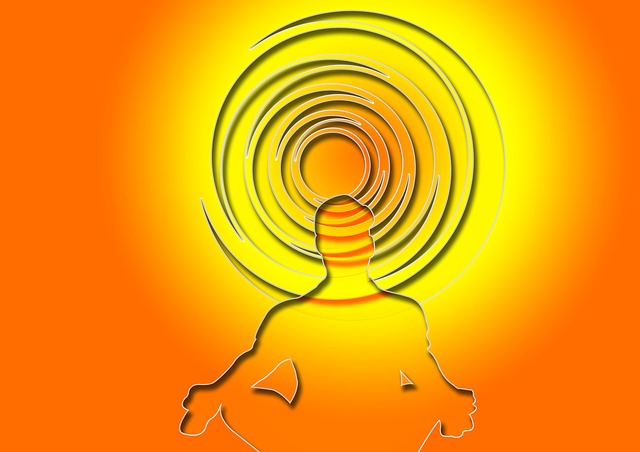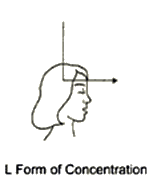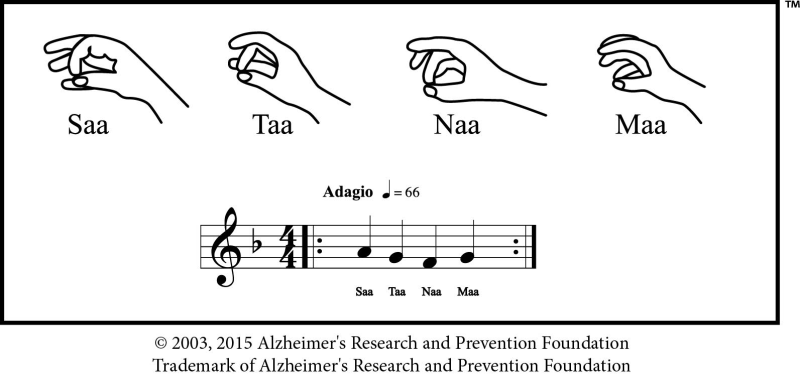 Note: The author acknowledges, with great compassion, that this is a challenging topic for the many individuals who make the difficult decision to begin treatment with psychiatric medication. All patients must be given the most complete and accurate information about these medications, including side effects (risk for dependence, violence, impulsivity, etc), the importance of properly tapering off medication, the institutional incentives for medical doctors, educators, and others to advocate for their use, and the availability of effective non-pharmaceutical avenues of treatment that can address root causes of mental illness and behavioral problems. What follows herein is a discussion of steps that the author believes should be taken in anticipation of any medication taper, and the subsequent taper should be handled by an experienced professional. Despite these considerations, some patients may be unable to taper which, in the author’s opinion, speaks to the important of true informed consent prior to medication initiation. This blog is not medical advice and does not replace consultation with a qualified medical professional of your choosing.
Note: The author acknowledges, with great compassion, that this is a challenging topic for the many individuals who make the difficult decision to begin treatment with psychiatric medication. All patients must be given the most complete and accurate information about these medications, including side effects (risk for dependence, violence, impulsivity, etc), the importance of properly tapering off medication, the institutional incentives for medical doctors, educators, and others to advocate for their use, and the availability of effective non-pharmaceutical avenues of treatment that can address root causes of mental illness and behavioral problems. What follows herein is a discussion of steps that the author believes should be taken in anticipation of any medication taper, and the subsequent taper should be handled by an experienced professional. Despite these considerations, some patients may be unable to taper which, in the author’s opinion, speaks to the important of true informed consent prior to medication initiation. This blog is not medical advice and does not replace consultation with a qualified medical professional of your choosing.
If you squeeze a spring and you hold it there, steadily for a couple of hours, and then you suddenly let go, what happens? It bursts into expansion, maybe double its natural size and reverberates for a while until it comes to a resting place. This is the example that I use when I describe the effects that antidepressants have on brain chemistry over time – they squeeze the spring and if you let it go too quickly, it’s mayhem.
Despite being taught, in my training, that antidepressants were to the depressed (and to the anxious, OCD, IBS, PTSD, bulemic, anorexic, etc.) what glasses are to the near-sighted, I don’t buy this anymore. I don’t think patients are getting the whole truth.
Here’s the deal: There is not a single human study that supports the “monoamine hypothesis” of depression, which is the idea that depression is caused by a certain kind of chemical imbalance in the brain, such as under-activity of serotonin. The only studies in which tryptophan (an amino acid precursor to serotonin) depletion resulted in depression were in patients who had previously taken antidepressants.
Imaging studies, post-mortem suicide assessments, and animal models have never yielded consistent patterns of neurotransmitter levels, metabolites, or receptor profiles. Compelling discussions like this one by Moncrieff and Cohen suggest that antidepressants actually createabnormal states rather than repair them. They use the analogy of alcohol’s disinhibiting effects: just because booze can ease one’s social phobia, does not imply that alcohol is an appropriate treatment nor a correcting agent.
Direct-to-consumer advertising in America has allowed pharmaceutical companies to “teach” the public about brain chemical imbalances and serotonin deficiencies through cleverly worded taglines and absent FDA-policing. The disconnect between available evidence and advertisements is explored in this excellent commentary.
But they do work! say many patients and their prescribers. And they do work! Sometimes. Thanks to active placebo effect or expectations of relief that manifest as actual physiologic changes as demonstrated by this metanalysis by Dr. Irving Kirsch, a placebo effect expert. He also collected unpublished data to show that more studies demonstrated lack of effect compared to marginal benefit largely attributed to placebo.
So what? Why come off antidepressants?
What are some of the undisclosed concerns about long-term treatment? They include chronic illness, risk of “relapse” increased by treatment as demonstrated by this study, increased disability, and even decreased benefit from exercise! Read more about the potential concerns here.
With some of these considerations in mind, you may be thinking, get me off this stuff! I’m done!
Not so fast.
What has fueled my fire about the irresponsible prescribing of psychiatric medications is bearing witness to cases of “severe discontinuation syndrome,” as the field euphemistically refers to the months to years of nervous system instability that can result from medication taper. The process of coming off of antidepressants is just that, a process.
If you’ve been treated for longer than two months it must be (painstakingly) slow with small incremental decreases in medication doses and use of liquid preparations and compounds when small increments are not available.
My approach to supporting medication taper is to promote resilience before the taper so that your body is very able to adapt to the change. This is the idea of draining your bucket so that it doesn’t overflow when the “Where-are-my-meds?!” brain and body bomb drops.
Here are what I believe to be the most important preparatory steps:
1. Balance blood sugar, support natural fats, and calm inflammation
Blood sugar instability can drag your insulin and cortisol levels around to an extent that impacts your thyroid, sex hormones, and immunity. Low fat or diets that are heavy on the wrong fat diets (trans, hydrogenated, heated vegetable oils) can compromise your central nervous system’s ability to support cell membrane functioning as well as hormone production.Inflammatory foods like gluten can also provoke brain-based reactions and immune system dysregulation. For these reasons and more, I recommend a high natural fat, no-suger/no-grain/no-legume month that eliminates corn, soy, dairy, and gluten, at a minimum. It’s the most effective way to control for these variables.
2. Support your adrenals
If you want to promote resiliency, train your body to respond with ease to stress. One of the most powerful ways to send a signal of safety to your nervous system and to retrain your response to stress is breathwork, and specifically kundalini yoga. If you’re like me, mindfulness meditation, aka “watching your thoughts” feels like an advanced course in impossible. Kundalini offers usable tools for rapid shifts. The goal is a pervasive feeling of trust in the process and an attitude of “I got this”. Start with three minutes!
3. Heal the gut
Make sure you’re pooping daily, have resolved gas, bloating, and indigestion through dietary change, relaxation during eating, and possibly the strategic the use of herbal anitmicrobials, gut healing agents like aloe and glutamine, and probiotics. The gut/brain axis is a major focus of resolving underlying inflammatory drivers of what likely got you on meds in the first place. Diet and stress minimization will go a long way toward resolving gut problems, but a stool analysis may also be indicated.
4. Clean house – inside and outside
In the past 100-150 years, we’ve done quite a number on this planet. The 100,000+ chemicals, largely unstudied for human safety, including pesticides, fluoride, and plastics put quite a demand on our defenses including our immune system and liver.
Cleaning up personal care products, cleaners, and even supporting detox through coffee enemas can really drain your bucket of accumulated burden.
Movement and sweating are also powerful ways to detox. I recommend 20 minutes of burst intervals (high intensity, low-volume) weekly as a starting point.
5. Seek strategic support
I recommend a slow taper using a compounding pharmacy and discuss more details here, but suffice it to say that shoring up the body with strategic supplements can help. I focus on calming the nervous system during medication tapers. Agents that have been identified as NMDA modulators or natural molecules that buffer the effects of excitatory glutamate are magnesium, zinc, N-acetylcysteine, and phenibut or GABA. I don’t always use amino acids as primary therapy, but they can be essential during a taper because of signals of “deficiency” that the body may be getting in the wake of medication discontinuation. Tryptophan and 5HTP, and L-tyrosine and dL-phenylalanine can be effective support. Inositol, a membrane stabilizer, and St. John’s Wort can also serve as transitional aids, which can relieve symptoms of anxiety or dips in mood.
Mostly, I counsel patients not to be afraid.
Psychiatrists are so driven by fear and a need to control and regulate the emotional experience. Once these first several steps are underway, there is a strong possibility that the original driver of your symptoms has been addressed. You may not have the same need or even be deriving much benefit from medication. In the end, I believe it is everyone’s choice to manage their health in a way that resonates with their beliefs about health and wellness.
This decision should be made with eyes wide open; however, and preferably with gentle interventions preceding more aggressive ones. The complexity of the body is awe-inspiring, and depression is a syndrome that has many many different causes. Look to the root, look to healing, and look to restoration for real lasting change.
Once you remember what we have forgotten – that the body is best at self-healing if we just get out of our own way – then you might shift into a new mindset of empowerment. You might just realize that you can reclaim something you gave away. Something that’s not available to you through a model of care based on life-long pharmaceuticals. It’s that feeling that we are always missing something even if our symptoms are “managed”. It’s our personal power and fearlessness. With this, anything is possible including becoming medication free after decades of exposure. Remember, this is your journey for a reason and there are no regrets.
Learn more in the NY Times Bestseller, A Mind of Your Own.
The post Antidepressant Discontinuation: Why & How appeared first on Kelly Brogan MD.



 You’d probably think I was running an infomercial if I told you about a simple intervention that:
You’d probably think I was running an infomercial if I told you about a simple intervention that: Repeat the Saa Taa Naa Maa sounds (or mantra) while sitting with your spine straight. Your focus of concentration is the L form (see illustration), while your eyes are closed. With each syllable, imagine the sound flowing in through the top of your head and out the middle of your forehead (your third eye point).
Repeat the Saa Taa Naa Maa sounds (or mantra) while sitting with your spine straight. Your focus of concentration is the L form (see illustration), while your eyes are closed. With each syllable, imagine the sound flowing in through the top of your head and out the middle of your forehead (your third eye point).
